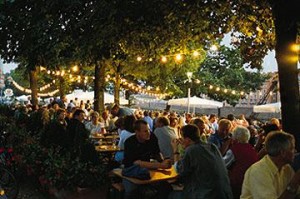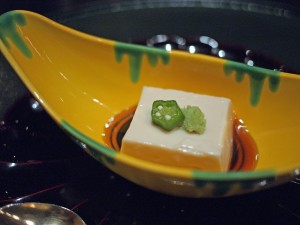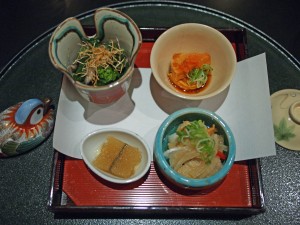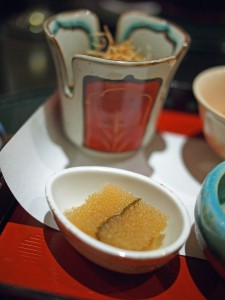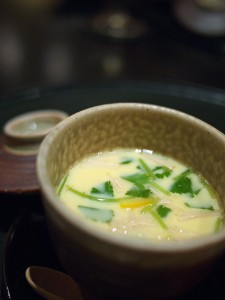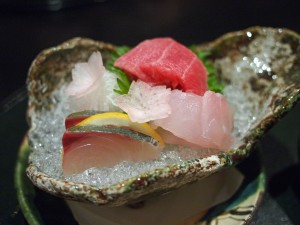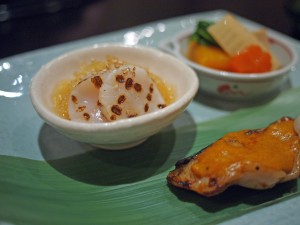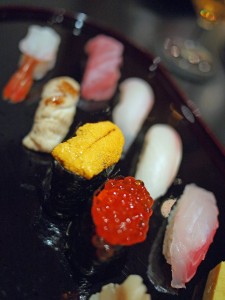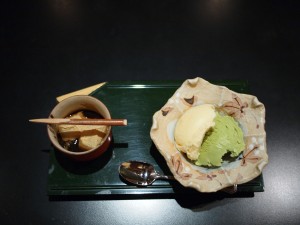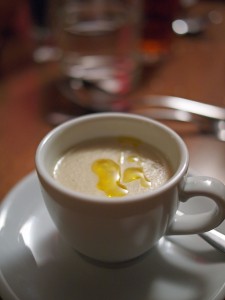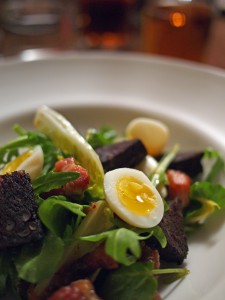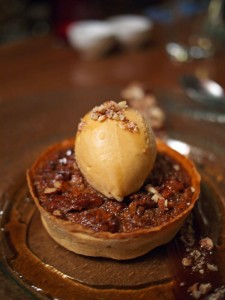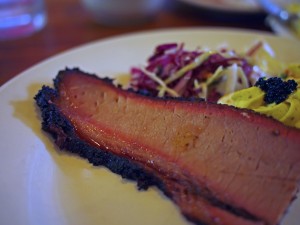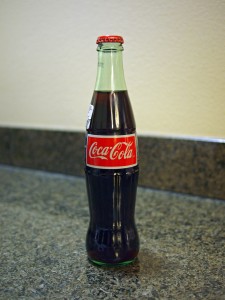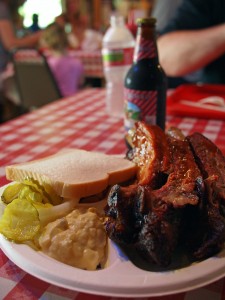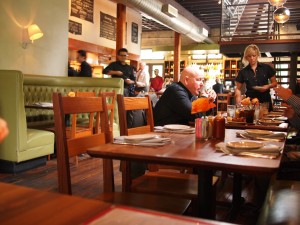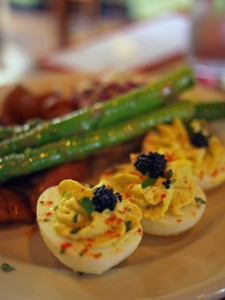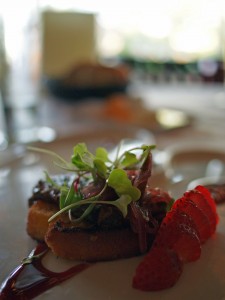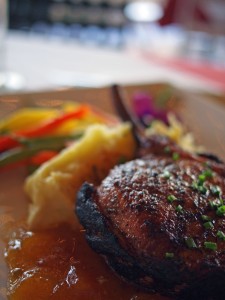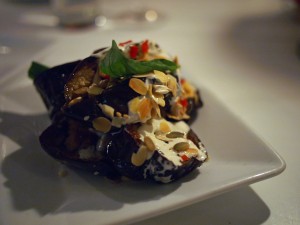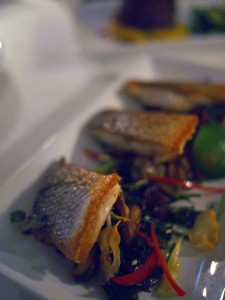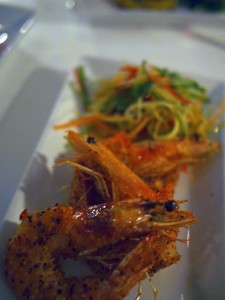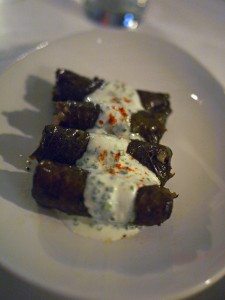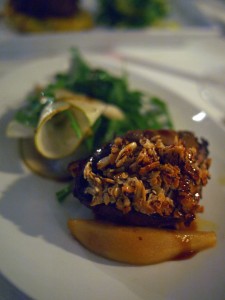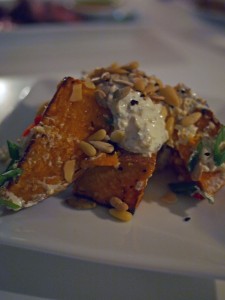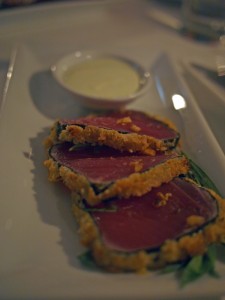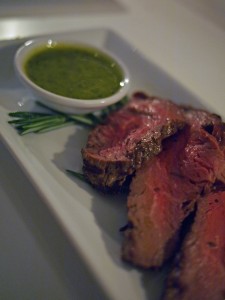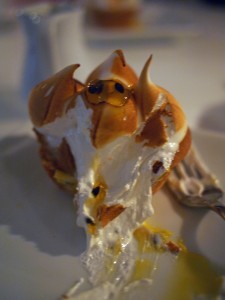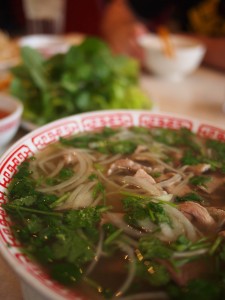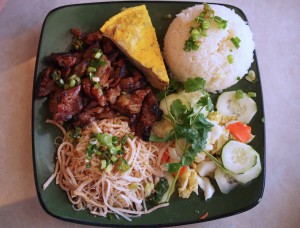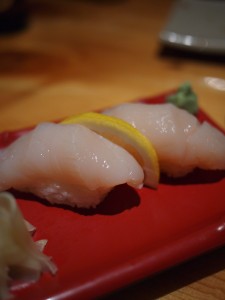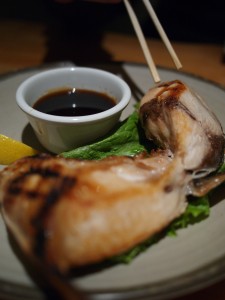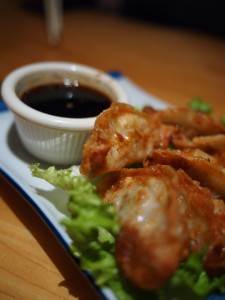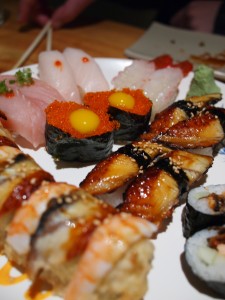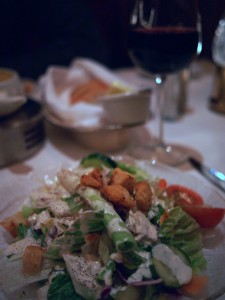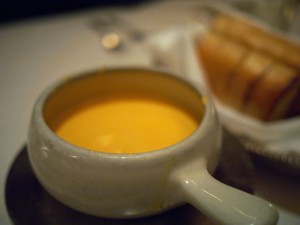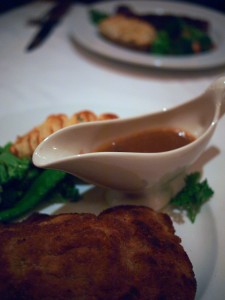So here I am in Southern California, getting too much sun and doing a lot of hiking. We spent most of Sunday clambering over stuff up Palomar Mountain, a few tens of miles of orange groves away from San Diego. Chef Carl Schroeder has been raking in the plaudits at Market (3702 Via De La Valle Del Mar, CA 92014, tel. (858) 523-0007) for his minutely, obsessively prepared dishes full of bouncingly fresh farm ingredients, so we swung by that evening, in the middle of the white corn season, to see what was on offer.
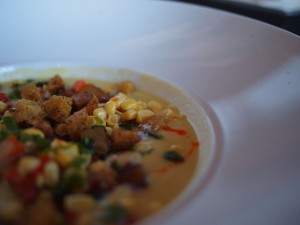
For me, the best of Californian cooking is all about the produce. This is one of those menus where the provenance of every last green bean is described, along, of course, with the sourcing of all the meats on offer. Schroeder is using whatever is at the peak of its season here, so those beans, the picked-this-minute sweet corn, and tomatoes bursting with the Californian sunshine all find a place on the plate. The chowder above was gloriously, thickly complex. Dense stock, a really good andouille sausage providing a velvety background of pork and spice, and astonishing depth of flavour from a whole garden of vegetables and herbs supporting the sweetness of some corn picked at the height of its ripeness.
All types of cuisine can be had at the many restaurants San Diego California has to offer.
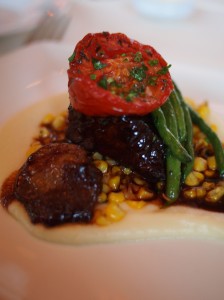
I ordered Schroeder’s signature dish, a beef short rib braised in Cabernet – the beef and the wine local, of course. A stupidly American portion size (what you can see in the picture above is only half of what was on the plate), and I was a little ashamed to finish the whole thing. Blame the hunger caused by a day’s hiking and the fact that this short rib was really pretty darn fabulous. All its connective tissues were reduced by long, slow sous-vide cooking to a perfectly tender mouthful, the dark Cabernet jus penetrating all the way through the joint. This was once a well-marbled and cheerfully pudgy cow, and all the fat had melted through the beef, carrying flavour and a lovely mouthfeel. More corn here, and some balsamic cippolini onions alongside a sweet onion and potato mash, just in case you don’t feel affairs on your plate are rich and dense enough already.
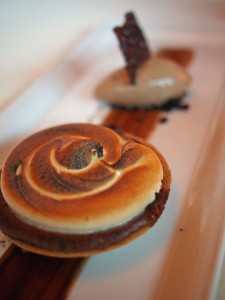
Another signature dish for dessert – pastry chef James Foran’s take on a s’more. If you’re English, you may not have come across s’mores. Imagine your Girl Guide/Boy Scout marshmallow-on-a-stick souped up, American style. Here, kids around a camp fire sandwich that marshmallow between two Graham crackers (nearest UK equivalent: the humble digestive biscuit) with a chunk of chocolate, and perform complicated grilling manoeuvres until the innards are melted. Here at Market, the chocolate is a fondant in a shell bearing only the barest resemblance to a Graham cracker – which is to say, that shell is crispy – and topped with a swirl of marshmallow. The shell is cheek-suckingly rich, flavoured with chocolate and cinnamon, and that marshmallow is made with brown sugar and a little smoked sea salt. Add a scoop of malted chocolate ice cream, and you have one hell of a dessert.
It’s a warm-feeling room, all chocolate leather, persimmon walls and modern-googie design touches. And there’s a fantastic and thoughtful wine list (although I ended up with a bottle of Kanchiku junmai sake, which was a great accompaniment to everything I’d ordered). A couple of duff notes: some insipid and tasteless asparagus with a smoked salmon starter, which stood out after the great season we’ve just had in Europe and alongside the other impeccably seasonal vegetables, especially since the kitchen had tried to remedy matters with a far-too-sharp dressing. Tables are uncomfortably crammed in. I felt awkwardly party to every detail of the second date going on to my right and the birthday on my left. And there’s really no excuse for making your parking valet-only, Market, when it takes less than ten seconds to walk from the end of the car park to the restaurant door. Still: all in all, a lovely, bright and fresh meal, and a restaurant I’d definitely visit again.



